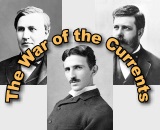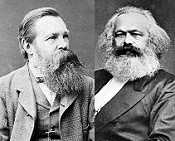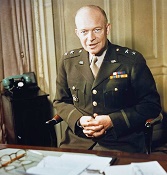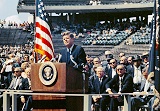| Societal Influences on Technology |
|
Rather than always linking to Wikipedia entries for common topics, I have been using ChatGPT to research and post brief summaries on many technical topics. The results are not always perfect, but I edit them as needed to be accurate. Courts have ruled that AI-generated content is not subject to copyright restrictions, but since I modify them, everything here is protected by RF Cafe copyright. Here are the major categories. Electronics & High Technology Company History | Electronics & Technical Magazines | Electronics & Technology Pioneers History | Electronics & Technology Principles | Technology Standards Groups & Industry Associations | Vintage Vacuum Tube Radio Company History | Electronics & High Technology Components | Societal Influences on Technology | Science & Engineering Instruments Societal Influences
Three Mile Island Nuclear Disaster The Three Mile Island nuclear disaster refers to an accident that occurred on March 28, 1979, at the Three Mile Island Nuclear Generating Station near Middletown, Pennsylvania, in the United States. It is considered one of the most significant nuclear incidents in U.S. history. The accident at Three Mile Island involved a partial meltdown of the reactor core in Unit 2, one of the two reactors at the plant. The incident was caused by a combination of equipment malfunctions, design-related issues, and operator errors. A cooling malfunction led to a loss of coolant, resulting in the fuel rods overheating. Unlike the Chernobyl disaster or the Fukushima disaster, which involved more extensive meltdowns and releases of radioactive materials, the Three Mile Island accident was a partial meltdown. The containment structure successfully prevented the majority of radioactive materials from being released into the environment. However, a small amount of radioactive gases and radioactive iodine were released during the accident, leading to concerns among the public about potential health effects. As a precautionary measure, residents of the surrounding area were advised to evacuate, although the evacuation orders were voluntary and not mandatory. The incident at Three Mile Island had a significant impact on public perception of nuclear power and safety. It led to increased scrutiny of nuclear power plants and prompted changes in safety regulations and emergency response procedures in the United States. The incident resulted in a decline in public support for nuclear energy and a slowdown in the construction of new nuclear plants. Following the accident, efforts were made to clean up and decommission the damaged Unit 2 reactor. The cleanup process involved removing the damaged fuel, decontaminating the reactor building, and managing the radioactive waste. The Unit 2 reactor was eventually permanently shut down, while Unit 1 continued operations until its final shutdown in 2019. While no immediate deaths or long-term health impacts have been directly attributed to the Three Mile Island accident, it did contribute to increased public concerns about the safety of nuclear power and the potential consequences of accidents. The incident highlighted the importance of robust safety measures, improved training for operators, and effective communication with the public regarding nuclear power operations. - See Full List - Angel Investor (Startup Funding) Angel investors, often regarded as the unsung heroes of the entrepreneurial world, play a pivotal role in fueling the dreams and ambitions of budding startups. This article dives into the world of angel investors, offering an insightful guide to what they are, how they operate, and their significance in the startup ecosystem. Angel investors, by definition, are affluent individuals who provide financial backing to early-stage startups and entrepreneurs. They are typically seasoned business professionals, successful entrepreneurs themselves, or high-net-worth individuals looking to invest their capital in promising ventures. The term "angel" originates from Broadway, where wealthy individuals provided financial support to theatrical productions. In the startup context, these "angels" breathe life into entrepreneurial endeavors. Angel investors are not just passive sources of funding. They offer more than just financial capital. They often bring valuable industry expertise, mentorship, and a robust network of contacts to the table. This active involvement can be an invaluable asset to startups, helping them navigate the complexities of building a successful business. Angel investors make equity investments in startups in exchange for ownership stakes in the company. The terms and conditions of these investments are usually negotiated through a contract or investment agreement. The amount of funding an angel invests can vary widely, from a few thousand dollars to millions, depending on the investor's capacity and the startup's needs. Startups seeking angel investment typically go through a structured process: Pitch: Entrepreneurs prepare a compelling business pitch or presentation that outlines their business idea, market opportunity, team, and financial projections. Due Diligence: Angel investors conduct due diligence to assess the viability of the business. This involves scrutinizing the startup's business plan, financial statements, and team background. Negotiation: If the investor is interested, negotiations begin, covering the investment amount, equity stake, and other terms. Investment: Once an agreement is reached, the angel invests capital into the startup, and the partnership is solidified. Angel investors serve as a critical source of early-stage funding for startups. Unlike venture capitalists who invest pooled money, angel investors use their own personal wealth. This means they can make investment decisions more swiftly, making them a lifeline for startups in need of quick capital infusion. They often invest in industries they are familiar with, leveraging their expertise and networks to support entrepreneurs. While angel investing offers the potential for substantial financial returns, it comes with inherent risks. Many startups fail, and angel investors may lose their entire investment. However, for those that succeed, the rewards can be substantial. It's this risk-reward dynamic that makes angel investing both exhilarating and challenging. - See Full List - Arab Oil Embargo The Arab Oil Embargo was a diplomatic and economic move by a group of Arab oil-producing countries in 1973. The embargo was primarily in response to the support that certain Western countries, particularly the United States, provided to Israel during the Yom Kippur War (October 1973). The participating Arab nations, including members of the Organization of Arab Petroleum Exporting Countries (OAPEC), implemented an oil embargo against the United States, Canada, Japan, the Netherlands, and the United Kingdom. They also reduced oil production and imposed price increases. The goal was to put pressure on these countries to change their policies regarding Israel. The embargo had significant economic implications, leading to a global energy crisis and causing oil prices to soar. It highlighted the vulnerability of countries heavily dependent on oil imports and underscored the geopolitical influence of oil-producing nations. The embargo eventually ended in 1974, but its effects had a lasting impact on global energy policies and relations between oil-producing and oil-consuming nations. - See Full List -Baby Boomer Baby boomers are a generation of people born in the post-World War II period between 1946 and 1964. The term "baby boom" refers to the significant increase in births that occurred during this time. Baby boomers grew up during a period of significant social, cultural, and technological change, and they have had a significant impact on many aspects of society. In terms of technology, baby boomers have had a significant influence on the development and adoption of many new technologies over the past several decades. As this generation grew up and entered the workforce, they became early adopters of many new technologies, which helped to drive innovation and change in the technology industry. One significant influence of the baby boomer generation on technology has been the development and widespread adoption of personal computers. In the 1980s, many baby boomers were entering the workforce and becoming increasingly reliant on computers for their work. As a result, they were instrumental in the development and widespread adoption of personal computers, which eventually led to the development of the internet and the rise of the digital age. Another significant influence of the baby boomer generation on technology has been the rise of mobile technology. As baby boomers have aged, they have become increasingly reliant on mobile devices like smartphones and tablets to stay connected and manage their daily lives. This has helped to drive innovation and growth in the mobile technology industry, which has had a significant impact on the way people communicate and access information. Additionally, the baby boomer generation has been instrumental in the development of medical technology. As this generation has aged, they have become increasingly focused on health and wellness, and they have been instrumental in driving the development of new medical technologies and treatments that have improved health outcomes and quality of life for millions of people around the world. - See Full List -
The War of the Currents, also known as the Battle of the Currents, was a historic event in the late 19th century that pitted two prominent inventors, Thomas Edison and Nikola Tesla, against each other in a bid to establish the dominant form of electrical power transmission in the United States. At the center of this battle was the question of whether direct current (DC) or alternating current (AC) was the best way to transmit electricity over long distances. Thomas Edison was a famous inventor, entrepreneur, and businessman who had already achieved great success with his invention of the incandescent light bulb. Edison was a staunch supporter of direct current (DC) as the most effective method for transmitting electricity. Direct current is a type of electrical current that flows in a single direction and is typically used for low voltage applications such as batteries. On the other hand, Nikola Tesla was a Serbian-American inventor, electrical engineer, and physicist who had immigrated to the United States in the early 1880s. Tesla was an advocate of alternating current (AC) as the most effective method for transmitting electricity over long distances. Alternating current is a type of electrical current that changes direction periodically and is typically used for high voltage applications such as power grids. The stage was set for the War of the Currents in the late 1880s when a number of companies, including Edison's General Electric, began developing electric power stations to provide electricity to homes and businesses. Edison was convinced that DC was the only way to transmit electrical power safely and efficiently, while Tesla believed that AC was the future of electrical power transmission. In 1887, Tesla was hired by the Westinghouse Electric Company to work on the development of AC power systems. Westinghouse saw the potential of AC power and recognized Tesla's genius in this area, and so they brought him on board as a consultant. Edison, who had a vested interest in DC power, was quick to launch a smear campaign against AC power, claiming that it was unsafe and that it posed a serious threat to public safety. Edison even went so far as to stage public demonstrations in which he electrocuted animals using AC power, in an attempt to convince the public that it was dangerous. However, Tesla and Westinghouse continued to develop AC power, and by the early 1890s, it had become clear that AC was the future of electrical power transmission. Tesla's AC motor was a significant breakthrough in this area, as it made it possible to transmit electrical power over long distances without significant power loss. Despite this, Edison continued to fight against AC power, and in 1893 he launched a campaign to discredit AC by introducing the electric chair as a method of execution. Edison argued that the electric chair should use AC power, claiming that it was more dangerous than DC power. However, this backfired on Edison when an electric chair using AC power was used to execute William Kemmler in 1890. The execution was botched, and Kemmler was subjected to a prolonged and painful death, which only served to further discredit Edison's claims about the safety of AC power. By the early 1900s, AC power had become the dominant form of electrical power transmission, and Tesla and Westinghouse had won the War of the Currents. However, the battle had taken a toll on both men, and Tesla's work on AC power had left him in poor health and financial ruin. In conclusion, the War of the Currents was a significant event in the history of electrical power transmission, and it pitted two of the most brilliant minds of the late 19th century against each other in a battle for supremacy. Despite Edison's best efforts, AC power emerged as the clear winner, and it remains the dominant form of electrical power - See Full List - Black Friday Black Friday (Shopping) Black Friday is a popular shopping event that occurs on the day after Thanksgiving in the United States, which is typically the fourth Thursday in November. It is often regarded as the unofficial beginning of the Christmas holiday shopping season. On Black Friday, many retailers offer significant discounts, special promotions, and doorbuster deals to attract shoppers, both online and in physical stores. The term "Black Friday" originated in the 1960s and was originally used to describe the heavy and disruptive pedestrian and vehicle traffic that would occur on the day after Thanksgiving. Over time, it came to represent the point at which retailers would start turning a profit for the year, moving from "in the red" to "in the black." The event has since evolved into a major shopping extravaganza, with people lining up outside stores before dawn and increasingly participating in online shopping as well. It's a time when many consumers seek to take advantage of the best deals on a wide range of products, including electronics, clothing, toys, and more. In recent years, some stores have extended their Black Friday sales into Thanksgiving Day, a practice that has generated controversy and debate about the impact on retail employees and the traditional holiday observance. Cyber Monday, which falls on the Monday after Thanksgiving, has also become a significant online shopping event, with many e-commerce sites offering discounts and promotions. Black Friday (Stock Market) Black Friday, in the context of the stock market crash, generally refers to the events of September 24, 1869. It was not related to the modern Black Friday shopping event, but rather, it was a significant event in the history of the U.S. stock market. This particular Black Friday is often associated with the financial panic of 1869. During this time, the United States was recovering from the economic turmoil and financial instability that followed the Civil War. In September 1869, a group of financiers, including Jay Gould and Jim Fisk, tried to corner the gold market by buying as much gold as possible to drive up its price and manipulate the market for their own gain. They believed that this would help them profit from a rise in the price of gold. Their actions and manipulative tactics created significant market volatility and led to a sudden and dramatic increase in the price of gold. This speculative frenzy came to a head on September 24, 1869, when the government intervened by selling a large amount of gold to stabilize the market and break the corner that Gould and Fisk had attempted to create. The result was a sharp and rapid drop in the price of gold, causing panic and a major financial crisis. Many investors and speculators faced significant losses. This event is known as "Black Friday" in the context of financial markets and is a notable historical example of market manipulation and its consequences. - See Full List -
Black Tuesday refers to October 29, 1929, when the stock market crashed in the United States, leading to the Great Depression. It was one of the most significant financial events in history and had a profound impact on the global economy. The Wall Street Crash of 1929, also known as the Stock Market Crash of 1929, was a major factor in triggering the Great Depression. It marked the end of the Roaring Twenties, a decade of economic prosperity and speculative excesses. On Black Tuesday, stock prices plummeted, and investors lost billions of dollars. Leading up to the crash, the stock market had experienced a period of excessive speculation, with many people borrowing money to invest in stocks. The market was overinflated, and signs of an impending crash started to appear in September 1929. On October 24, 1929, known as Black Thursday, the market experienced a sharp decline, but it was followed by a brief recovery. However, on Black Tuesday, October 29, 1929, panic selling reached its peak, and the Dow Jones Industrial Average dropped significantly, marking the start of the Great Depression. The consequences of the Wall Street Crash were severe and far-reaching. The stock market collapse wiped out many investors and caused numerous banks to fail. The crash led to a sharp decline in consumer spending, business failures, and high unemployment rates. It triggered a worldwide economic downturn, with countries around the globe facing financial crises. In response to the Great Depression, governments implemented various measures to stabilize the economy and prevent future financial disasters. These included the implementation of banking regulations, the creation of social welfare programs, and the introduction of fiscal policies aimed at stimulating economic growth. The Wall Street Crash of 1929 and the subsequent Great Depression served as important lessons for economists, policymakers, and financial institutions, shaping future regulations and approaches to economic stability. - See Full List - The Chernobyl nuclear disaster was a catastrophic accident that occurred on April 26, 1986, at the Chernobyl Nuclear Power Plant in northern Ukraine, which was then part of the Soviet Union. It is considered the worst nuclear accident in history. The disaster happened during a late-night safety test at the plant's reactor number 4. Due to a combination of design flaws and operator errors, the reactor experienced a critical power increase, leading to a steam explosion and a subsequent fire. The explosion released a large amount of radioactive materials into the atmosphere, forming a plume of radioactive particles that spread over a vast area. The immediate effects of the Chernobyl disaster were devastating. Two plant workers died on the night of the explosion, and many more suffered from acute radiation sickness. The fire burned for approximately nine days and released substantial amounts of radioactive substances, including iodine-131, cesium-137, and strontium-90, into the environment. The radioactive plume affected nearby regions, as well as parts of Belarus, Russia, and other European countries. In the aftermath of the accident, the Soviet government initially downplayed the severity of the situation, delaying the evacuation of nearby residents and failing to inform the international community promptly. Eventually, the extent of the disaster became apparent, and the Soviet government acknowledged the gravity of the situation. The nearby city of Pripyat, which housed the plant's workers and their families, was evacuated a day after the explosion. The exclusion zone around the plant was later expanded, and thousands of people were displaced. The Chernobyl disaster had severe consequences for human health and the environment. Acute radiation syndrome, thyroid cancer, and an increased risk of other cancers were among the immediate health impacts observed in those exposed to high levels of radiation. Long-term effects, such as an elevated risk of cancer, genetic mutations, and psychological trauma, have also been documented. EEfforts were made to mitigate the effects of the disaster and stabilize the site. The damaged reactor was sealed within a hastily constructed sarcophagus made of concrete and steel to contain the radioactive materials. In 2016-2017, a larger and more durable structure called the New Safe Confinement was installed to provide additional protection and allow for the eventual decommissioning of the plant. Today, Chernobyl remains an abandoned city within the exclusion zone, and the surrounding area is still contaminated with radiation. However, the site has also become a subject of scientific research and attracts tourists who want to learn about the disaster and its aftermath. Ongoing efforts are focused on managing the environmental and health impacts of the Chernobyl disaster and ensuring the long-term safety of the area. - See Full List - FCC Spectrum Auction 1 The Federal Communications Commission's (FCC's) "Auction 1" was a landmark spectrum auction that took place from July 25 to July 29, 1994. It was the first time exclusive rights to a portion of the electromagnetic spectrum was auctioned off to public companies. involved the allocation of licenses for the Narrowband Personal Communication System (PCS) band. 10 nationwide licenses and 1 additional nationwide license were awarded for 901-902 MHz, 930-931 MHz, and 940-941 MHz. 6 winning bidders paid a total of $617,006,674 for the 10 licenses. - See Full List - The Fukushima nuclear disaster refers to the series of events that occurred at the Fukushima Daiichi Nuclear Power Plant in Japan following a massive earthquake and tsunami on March 11, 2011. It is considered one of the most significant nuclear accidents since the Chernobyl disaster in 1986. The earthquake, measuring magnitude 9.0, struck off the northeastern coast of Japan, triggering a powerful tsunami that inundated the Fukushima Daiichi plant. The tsunami caused severe damage to the plant's cooling systems, leading to a loss of power and subsequent reactor meltdowns in three of the plant's six reactors (Units 1, 2, and 3). The meltdowns occurred as the fuel rods overheated and the reactor cores suffered damage. The damaged reactors released a significant amount of radioactive materials into the environment, resulting in the evacuation of tens of thousands of residents living near the plant. The Japanese government designated an exclusion zone around the plant, restricting access to the area due to radiation risks. The Fukushima disaster raised concerns about nuclear safety and had a profound impact on Japan's energy policies. It prompted a reevaluation of nuclear power and the development of stricter regulations. The incident also led to a global discussion about the safety of nuclear energy and the potential consequences of natural disasters on nuclear facilities. Efforts to stabilize the Fukushima Daiichi plant and mitigate the release of radioactive materials have been ongoing. The plant's operator, Tokyo Electric Power Company (TEPCO), implemented measures such as cooling the reactors, constructing protective barriers, and managing the contaminated water that accumulated at the site. The decommissioning process at Fukushima Daiichi is a complex and long-term endeavor that is expected to take several decades. It involves removing the fuel debris from the damaged reactors, decontaminating the site, and managing the accumulated radioactive waste. The long-term health effects of the Fukushima disaster are still a subject of study and debate. While no immediate deaths were attributed to radiation exposure, the incident caused significant psychological distress and displaced many residents from their homes. Ongoing monitoring and health studies are being conducted to assess the potential health impacts on both the affected population and the environment. The Fukushima nuclear disaster serves as a reminder of the importance of robust safety measures, emergency preparedness, and continuous improvement in the operation of nuclear power plants. It also highlights the need for careful site selection and comprehensive risk assessment when considering the establishment of nuclear facilities. - See Full List - Gay Nineties The term "Gay Nineties" typically refers to the 1890s, a period of time known for its lively and exuberant social scene in the United States and parts of Europe. It's often characterized by its emphasis on leisure, entertainment, and cultural shifts. In the United States, the Gay Nineties were marked by economic growth and urbanization. The term "gay" in this context doesn't necessarily refer to sexual orientation, but rather to the sense of carefree and vibrant living that was associated with the era. This was a time of technological advancements, with the spread of electricity, the expansion of urban infrastructure, and the emergence of new forms of entertainment. During the Gay Nineties, vaudeville shows, musical theater, and other forms of entertainment gained popularity. It was a time of optimism and consumerism, with the upper and middle classes enjoying the new urban lifestyle. The Gibson Girl, a fictional character created by artist Charles Dana Gibson, came to symbolize the idealized independent and confident woman of this period. Fashion also played a significant role during the Gay Nineties, with women's clothing featuring hourglass silhouettes, high collars, and elaborate hats. Men's fashion included formal suits and top hats for more formal occasions. The Gay Nineties saw the emergence of some social issues as well, including the Women's Suffrage Movement advocating for women's right to vote and the beginning of discussions around labor rights and workers' conditions. - See Full List - Gen X (Generation X) Generation X, often abbreviated as Gen X, is a demographic cohort that follows the Baby Boomers and precedes the Millennials. While there isn't a precise consensus on the birth years that define Generation X, it typically includes individuals born roughly between the mid-1960s and the early 1980s. Members of Generation X came of age during a period of significant social, economic, and technological change, including the rise of personal computing, the internet, and globalization. They are often characterized as independent, pragmatic, and resourceful, having grown up during times of economic uncertainty, changing family structures, and rapid advancements in technology. Some key cultural touchstones associated with Generation X include the rise of alternative music, the popularity of grunge and hip-hop, the emergence of video games and home computers, and the influence of movies and television shows that reflected their experiences and worldview. - See Full List - Gen Z (Generation Z) Generation Z, often abbreviated as Gen Z, is the demographic cohort succeeding Millennials and preceding Generation Alpha. While there's some variation in defining the exact birth years for Generation Z, they are typically considered to include individuals born from the mid-to-late 1990s to the early 2010s. Generation Z is known for being the first generation to grow up entirely in the digital age, with widespread access to the internet, smartphones, and social media from a young age. As a result, they are often characterized as digital natives, highly adept at using technology and social media platforms for communication, entertainment, and information. Members of Generation Z are diverse, globally connected, and socially conscious. They have been shaped by events such as the Great Recession, climate change activism, and movements for social justice. Gen Z is often associated with values such as inclusivity, sustainability, and authenticity. - See Full List -
The Great Depression was a time of unprecedented economic hardship and societal upheaval that profoundly impacted the United States and the world. This story delves into the onset, causes, suffering, and ultimate end of this era-defining period. The onset of the Great Depression was abrupt and shocking. On October 29, 1929, an event known as Black Tuesday, the stock market crashed in a spectacular fashion, with stock prices plummeting. This sent shockwaves through the financial world, wiping out the savings and investments of countless individuals. It was a stark omen of the difficulties that lay ahead, foreshadowing a dark period in American history. The root causes of the Great Depression were complex and deeply intertwined. The economy of the 1920s had been marked by overproduction and exuberance. While factories churned out goods in abundance, consumers' purchasing power was constrained. The banking system, inadequately regulated, stood on shaky ground, creating a vulnerability that would soon be exposed. The aftermath of World War I and the contraction of international trade further added to the economic turmoil, creating a fragile economic ecosystem. A simultaneous ecological catastrophe known as the Dust Bowl deepened the suffering. Severe drought and soil erosion in the American Plains led to widespread agricultural devastation. Farmers and their families, who had already been reeling from economic hardship, were forced to abandon their homes in search of a better life, exacerbating the societal turmoil. The impact of the Great Depression was felt deeply by millions of Americans. Unemployment rates skyrocketed, reaching nearly 25% at their height. Many lost their jobs and, subsequently, their homes and savings. The streets of major cities were crowded with breadlines, and shantytowns, derisively known as "Hoovervilles" after then-President Herbert Hoover, sprang up to house the homeless. The emotional toll of the Depression was immense. Suicide rates increased significantly as individuals grappled with the overwhelming financial and emotional hardship. Families, in particular, bore the brunt of the suffering, with parents struggling to provide for their children, leading to malnutrition and poverty. In the midst of this seemingly endless era of despair, World War II emerged as an unexpected beacon of hope. The outbreak of the war in the late 1930s and early 1940s brought about an economic transformation. The war effort necessitated massive government spending and the expansion of the industrial sector, creating jobs and spurring economic growth. The military and defense industries experienced a surge in employment, absorbing millions of workers. Fiscal and monetary policies were deployed to stimulate the economy, and regulatory reforms were introduced to prevent future financial crises. The war, with its economic mobilization, acted as a catalyst for recovery, ultimately bringing an end to the Great Depression. The Great Depression was a profound and lasting influence on the United States. It led to significant changes in economic policy and financial regulation. The government's role in mitigating economic crises became more pronounced. The lessons of the Great Depression continue to inform economic thought and policy, reinforcing the importance of safeguarding the financial system and implementing measures to protect against economic catastrophe. - See Full List - The Imperial Japanese Navy (IJN) was the naval force of the Empire of Japan from 1869 to 1947. It played a significant role in Japan's imperial expansion and military operations during the late 19th and early 20th centuries. The IJN was established following the Meiji Restoration in 1868 when Japan underwent a period of modernization and industrialization. The navy was initially formed by taking over and reorganizing the feudal-era fleets of various domains. Over time, Japan acquired and built modern warships, often through foreign purchases and technology transfers. During the late 19th century, the IJN participated in several conflicts, including the First Sino-Japanese War (1894-1895) and the Russo-Japanese War (1904-1905). These conflicts demonstrated Japan's growing naval power and marked the decline of traditional Western naval dominance in the region. By the early 20th century, the IJN had become one of the most powerful navies in the world. It was known for its technological innovations and effective use of naval aviation, including aircraft carriers. The navy had a strong focus on offensive operations, with an emphasis on decisive battles at sea. During World War II, the IJN played a major role in Japan's military operations across the Pacific. Its attack on Pearl Harbor on December 7, 1941, brought the United States into the war. The navy was involved in numerous campaigns and battles throughout the war, including the Battle of Midway, Guadalcanal, Leyte Gulf, and the Battle of Okinawa. However, as the war progressed, the IJN faced increasing challenges due to the industrial and resource limitations of Japan. The navy suffered heavy losses, including the sinking of many of its capital ships and aircraft carriers. By the end of the war in 1945, the IJN was severely weakened and largely destroyed. Following Japan's surrender in 1945, the IJN was disbanded under the terms of the post-war Allied occupation. It was subsequently reestablished as the Maritime Self-Defense Force (MSDF) in 1954, which is the modern naval force of Japan today. The Imperial Japanese Navy left a significant legacy in terms of naval warfare, technology, and strategy. Its innovations and tactics influenced naval development worldwide, and its history remains a subject of study and fascination for military historians. - See Full List - The Interstate Highway System, commonly known as the Interstate System or simply the Interstate, is a vast network of controlled-access highways that spans the United States. It was authorized by the Federal Aid Highway Act of 1956 and is a significant component of the country's transportation infrastructure. The system is often referred to using the prefix "I" followed by a number (e.g., I-95, I-10) to designate individual routes. Key features and facts about the Interstate Highway System: Origin and Purpose: The Interstate Highway System was initiated under President Dwight D. Eisenhower's administration. The inspiration for the system came from his observations of the German autobahn network during World War II, which showcased the potential benefits of high-speed roadways for both military and civilian purposes. Funding and Construction: The construction of the Interstate System was a joint effort between federal and state governments. The federal government provided most of the funding, with states contributing a portion as well. Construction took place over several decades and required extensive coordination between federal agencies and state departments of transportation. Design and Standards: The Interstates are designed to be safe, high-speed highways with limited access points, controlled entrances and exits, and various safety features. These design standards help ensure a consistent driving experience across different states and regions. Numbering System: Interstate highways are numbered in a systematic manner. Odd-numbered routes typically run north-south, while even-numbered routes generally run east-west. The lowest numbers are typically found in the west, and the numbers increase as you move eastward. Primary and Auxiliary Routes: The Interstate System comprises both primary and auxiliary routes. Primary routes are typically the main arteries connecting major cities and regions, while auxiliary routes (designated with a three-digit number) branch off from primary routes to serve smaller cities or provide alternate routes. Impact on Travel and Economy: The Interstate Highway System has had a profound impact on travel, commerce, and economic development. It facilitates the efficient movement of goods and people, encourages tourism, and supports the growth of suburban areas. Environmental and Social Impact: While the Interstate System brought about numerous benefits, its construction also had environmental and social consequences. Highways sometimes cut through communities and natural areas, leading to issues like urban sprawl and disruption of ecosystems. Maintenance and Upgrades: Maintaining and upgrading the Interstate System is an ongoing challenge. As the system ages, many highways require repairs and improvements to meet modern safety standards and accommodate increasing traffic. Interstate Highway System Today: Today, the Interstate Highway System consists of over 47,000 miles (75,600 kilometers) of highways crisscrossing the United States. The system continues to play a crucial role in transportation, though there are ongoing discussions about the need for updates to accommodate changing transportation needs and address environmental concerns. - See Full List - Lend-Lease Act The Lend-Lease Act, signed into law by President Franklin D. Roosevelt on March 11, 1941, allowed the United States to provide military aid and assistance to its allies during the early days of World War II prior to America's official entrance following Japan's surprise attack at Pearl Harbor on December 7, 1941. In the early years of World War II, Nazi Germany had already conquered much of Europe, and Britain was standing alone against the Axis powers. The United States, under President Franklin D. Roosevelt, was sympathetic to the Allied cause but faced political and public resistance to direct involvement in the war. The Lend-Lease Act gave the President the authority to lend or lease military equipment and other supplies to any country whose defense was deemed vital to the security of the United States. The term "Lend-Lease" reflected the idea that the U.S. would lend or lease, rather than sell, military equipment to the Allies, with "no money up front." The recipients were not required to pay for the aid immediately but would return or compensate the U.S. after the war. The act was not limited to providing assistance to any specific country but allowed aid to be extended to any nation whose defense was essential to the security of the United States. The President was granted considerable discretion in determining the terms and conditions of the aid, providing flexibility in responding to the changing dynamics of the war. The Lend-Lease Act marked a shift in U.S. policy from strict neutrality to a more active role in supporting the Allies. It allowed the United States to provide crucial assistance to nations like the United Kingdom, the Soviet Union, and China, helping them resist Axis aggression. - See Full List - Management by Walking Around "Management by Walking Around" (MBWA) is a management philosophy that was popularized by the co-founders of Hewlett-Packard (HP), Bill Hewlett and David Packard. It emphasizes the importance of direct interaction and communication between managers and their employees by physically walking around the workplace. The concept was introduced in the 1970s and is still relevant today as a management approach. The key principles of Management by Walking Around include: Visibility and Accessibility: Managers should be visible and approachable to employees. By being physically present in the work area, they can observe the operations, understand the work environment, and be more accessible to employees. Employee Engagement: MBWA encourages managers to engage with employees, discuss their concerns, and gather feedback. By interacting directly with employees, managers can build relationships, boost morale, and create a positive work culture. Real-Time Information: When managers walk around and engage with employees, they get real-time information about ongoing projects, challenges, and successes. This helps them stay informed and make more informed decisions. Understanding the Ground Reality: MBWA enables managers to have a firsthand understanding of the organization's operations, challenges, and opportunities. It helps them gain insights that may not be apparent from formal reports or meetings. Empowerment and Support: By being present and actively listening to employees, managers can identify areas where employees might need support or resources. This promotes a sense of empowerment among the workforce. Problem-Solving: MBWA enables managers to identify and address problems early on, preventing potential issues from escalating. Recognition and Appreciation: Managers can use MBWA as an opportunity to recognize and appreciate employees for their efforts and achievements. This enhances motivation and job satisfaction. It's important to note that MBWA is not about micromanaging or interfering with day-to-day operations but rather about fostering open communication and building trust between managers and employees. This approach can be especially valuable in large organizations or those with geographically dispersed teams. - See Full List -
Marxism is a socio-economic and political theory that was developed by Karl Marx and Friedrich Engels in the 19th century. It provides a comprehensive framework for understanding and analyzing society, history, and economics, with the ultimate goal of achieving a classless and stateless society. At the core of Marxism is the concept of historical materialism. This theory posits that the development of society is primarily driven by economic factors, and it emphasizes the role of class struggle and the evolving relationships between social classes throughout history. According to historical materialism, economic conditions and the means of production (such as factories, land, and technology) shape social and political structures. Marxism sees society as divided into two primary classes: the bourgeoisie (capitalist class) and the proletariat (working class). The ongoing conflict and exploitation between these classes are believed to be the driving force behind social change and revolution. Marxists critique capitalism, arguing that it is an inherently exploitative system that leads to inequality, alienation, and social injustice. They contend that capitalism perpetuates the accumulation of wealth in the hands of a few, while the majority of people face economic hardships. Marxists believe that the working class, once sufficiently conscious of their exploitation, will rise up in a proletarian revolution to overthrow the capitalist system. This revolution is seen as a necessary step toward the establishment of a classless society, often referred to as communism. In a fully realized Marxist society, there would be no private ownership of the means of production, and resources would be collectively owned and distributed according to need. This stateless and classless society is often referred to as communism, where individuals are expected to contribute according to their abilities and receive according to their needs. - See Full List -
The term "military–industrial complex" refers to the close and often mutually beneficial relationship between a country's military establishment and its defense industry. This concept was famously coined by President Dwight D. Eisenhower in his farewell address to the nation on January 17, 1961, as he warned about the potential dangers of this relationship. President Eisenhower expressed concerns about the influence and power that the combination of the military and industrial sectors could wield over government policy, public spending, and national priorities. He believed that this complex could potentially lead to an unnecessary buildup of military forces, an overemphasis on defense spending, and a distortion of national interests. The military–industrial complex involves a network of interactions and interests, including defense contractors, research and development organizations, government agencies responsible for defense procurement, and the armed forces themselves. These entities can become intertwined in a way that promotes the growth of defense industries and encourages the ongoing development and production of military hardware, even during times of relative peace. Critics of the military–industrial complex argue that it can lead to a situation where profit motives and political considerations drive defense spending, potentially diverting resources from other pressing societal needs such as healthcare, education, and infrastructure. They suggest that the complex could influence foreign policy decisions, as military interventions or conflicts could lead to increased demand for defense products and technologies. Supporters of a strong defense industry, on the other hand, often emphasize the importance of national security and technological innovation. They contend that a robust defense sector can contribute to economic growth, provide jobs, and foster technological advancements that can have civilian applications as well. - See Full List -
President John F. Kennedy's famous challenge regarding the Moon was announced on May 25, 1961. In a speech to a joint session of Congress, Kennedy set an ambitious goal for the United States to land a man on the Moon and return him safely to Earth before the end of the 1960s. This became known as the "Moon challenge" or the "Moon landing goal." Kennedy's challenge was motivated by the Cold War rivalry between the United States and the Soviet Union. At the time, the Soviet Union had taken an early lead in space exploration by launching the first satellite, Sputnik, and putting the first human, Yuri Gagarin, into orbit. Kennedy saw the Moon landing goal as a way for the United States to demonstrate its technological prowess and achieve a significant victory in the space race. In his speech, Kennedy emphasized the importance of space exploration and its connection to national security, scientific progress, and human achievement. He stated: "I believe that this nation should commit itself to achieving the goal, before this decade is out, of landing a man on the Moon and returning him safely to the Earth. No single space project in this period will be more impressive to mankind, or more important for the long-range exploration of space; and none will be so difficult or expensive to accomplish." This challenge set in motion the Apollo program, which aimed to fulfill Kennedy's goal. The Apollo missions culminated in the successful Moon landing of Apollo 11 in July 1969, thus accomplishing the objective set by President Kennedy. - See Full List - Millennial Millennials are a generation of people born between 1981 and 1996, also known as Generation Y. They grew up during a time of significant technological change and have had a significant impact on the way we use and interact with technology. One major influence that Millennials have had on technology is the widespread adoption of social media platforms. Millennials were some of the earliest users of social media, and their use of platforms like Facebook, Twitter, and Instagram helped to drive the rapid growth of social media in the 2000s and 2010s. This, in turn, has had a significant impact on the way we communicate and connect with each other. Another significant influence of Millennials on technology is the rise of mobile technology. As the first generation to grow up with smartphones, Millennials have been instrumental in driving the growth of mobile technology and the development of mobile apps. This has had a significant impact on the way we access and consume information, as well as the way we conduct business and manage our daily lives. Millennials have also had a significant impact on the sharing economy, which has been driven in large part by the growth of online platforms and mobile apps. Companies like Uber, Airbnb, and TaskRabbit have disrupted traditional industries and transformed the way we think about work, transportation, and travel. - See Full List - Mutual Assured Destruction (MAD) Mutual Assured Destruction (MAD) is a doctrine that emerged during the Cold War, primarily between the United States and the Soviet Union. It is a strategic concept based on the idea that if both sides possess a sufficient nuclear arsenal capable of surviving a first strike and retaliating with devastating force, neither side would initiate a nuclear war due to the certainty of their own destruction. In October 1962, the United States discovered that the Soviet Union had secretly deployed nuclear missiles in Cuba, just 90 miles off the coast of Florida. The presence of these missiles posed a direct threat to the United States, as they could potentially reach major American cities within minutes. This discovery led to a tense standoff between the two superpowers, with the world on the brink of nuclear war. The United States, under President John F. Kennedy, demanded the immediate removal of the missiles and established a naval blockade around Cuba to prevent further Soviet shipments. It was during that period that the term "Mutual Assured Destruction" (MAD) was coined. The core principle of MAD is deterrence. It rests on the belief that the threat of overwhelming retaliation would prevent either side from launching a nuclear attack because the consequences would be catastrophic for both nations. The doctrine assumes that leaders are rational actors who prioritize self-preservation and would avoid actions that would lead to their own annihilation. Under MAD, each side maintains a secure second-strike capability, which means they have enough surviving nuclear forces after a first strike to launch a devastating counterattack. The goal is to create a situation of "assured destruction" where both sides understand that any aggression would result in their own ruin. MAD was seen as a stabilizing force during the Cold War because it introduced a balance of power and prevented the outbreak of a large-scale nuclear conflict between the superpowers. However, it also led to an arms race as both sides sought to build up their nuclear arsenals to ensure the credibility of their deterrence. Since the end of the Cold War, the global strategic landscape has evolved, and the concept of MAD has been challenged by emerging security threats and the proliferation of nuclear weapons. However, the idea of deterrence remains a fundamental principle in international relations and continues to shape nuclear policies and strategic thinking. - See Full List - Rosie the Riveter is an iconic symbol of female empowerment and the women's labor movement during World War II. The term "Rosie the Riveter" originally referred to a fictional character featured in a song of the same name, written by Redd Evans and John Jacob Loeb in 1942. The song was inspired by Rosalind P. Walter, a real-life munitions worker at the time. The character Rosie the Riveter became widely associated with the millions of women who joined the workforce in factories and shipyards to support the war effort while men were away fighting. Rosie symbolized the women who took on traditionally male-dominated jobs and proved their capability and dedication to the war production. She represented the new image of women as strong, independent, and capable of performing demanding work. One of the most famous visual representations of Rosie the Riveter is a poster created by J. Howard Miller in 1943. The poster features a woman wearing a blue work uniform, a red bandana, and flexing her arm with the slogan, "We Can Do It!" The image has since become an enduring symbol of female empowerment and feminism. Rosie the Riveter represents the social and cultural shift that took place during World War II, highlighting the significant role women played in the war effort and the workforce. She continues to inspire and symbolize the strength and resilience of women in the face of challenges and the fight for gender equality. - See Full List - Rural Electrification Act (REA) The Rural Electrification Act (REA) is a significant piece of legislation in the United States that was enacted as part of the New Deal under President Franklin D. Roosevelt. The act was signed into law on May 20, 1936, and it aimed to address the lack of electricity in rural and remote areas of the country. At the time, urban areas were generally well-served by electric utilities, but rural areas were largely without access to electricity, which hindered economic development and quality of life for rural residents. The Rural Electrification Act created the Rural Electrification Administration (REA), a federal agency tasked with providing loans and grants to electric cooperatives and utilities to extend electric service to rural communities. These electric cooperatives were owned and operated by the residents of the communities they served, helping to ensure that the needs of rural areas were met. Through the REA, rural communities were able to access funds that helped build electrical infrastructure, including power lines, substations, and generating facilities. This initiative played a crucial role in bringing electricity to millions of rural Americans and contributing to the modernization of rural life. It had a significant impact on improving agricultural productivity, boosting economic development, and enhancing overall living standards in rural areas. - See Full List - Space Race The term "space race" typically refers to the competition between the United States and the Soviet Union during the Cold War era to achieve various milestones in space exploration. While the original space race primarily focused on human spaceflight and lunar exploration, it led to significant advancements in technology across multiple disciplines. While the U.S. achieved the high-profile goal of landing humans on the Moon first, it's essential to recognize that the Space Race was about more than just lunar landings. Both the United States and the Soviet Union made significant contributions to space exploration during this period: Rockets: The development of powerful and reliable rockets was essential for launching spacecraft into space. The Soviet Union's R-7 rocket, which carried the first artificial satellite, Sputnik, into orbit in 1957, and the U.S.'s Saturn V rocket, which took astronauts to the Moon during the Apollo missions, were major achievements of the space race. These rockets formed the foundation for future space launch systems. Satellites: The space race spurred advancements in satellite technology. The launch of Sputnik and subsequent satellites provided opportunities for scientific research, communication, and weather forecasting. Satellites became crucial tools for gathering data, monitoring Earth's resources, and enhancing global communications. Human Spaceflight: The race to put humans in space pushed the boundaries of technology. The Soviet Union's Vostok and Voskhod spacecraft, as well as the U.S.'s Mercury and Gemini programs, paved the way for crewed missions. Capsules and life support systems were developed to sustain astronauts in the harsh environment of space. Spacecraft and Lunar Modules: The Apollo program, a flagship initiative of the U.S., aimed to land humans on the Moon. This required the development of spacecraft capable of traveling to the Moon and lunar modules for landing and takeoff from its surface. The technologies developed for these missions had significant impacts on space exploration and engineering. Guidance and Navigation Systems: Precise guidance and navigation were crucial for successful space missions. The development of navigation systems such as the Inertial Measurement Unit (IMU) and the Apollo Guidance Computer (AGC) allowed spacecraft to determine their position and make necessary course corrections during missions. Materials Science: Advances in materials science were essential for creating lightweight yet strong materials for spacecraft construction. The space race encouraged research into new alloys, composites, and heat-resistant materials, which found applications in various industries beyond space exploration. Miniaturized Electronics: The miniaturization of electronic components was a significant outcome of the space race. The need for lightweight and compact systems led to the development of smaller and more efficient electronic devices, which later found their way into consumer electronics and other fields. Telecommunications: To communicate with spacecraft in orbit and on the Moon, new telecommunications systems were developed. These advancements led to the expansion and improvement of global communication networks, laying the foundation for satellite communication systems that we rely on today. Earth Observation: The space race prompted advancements in Earth observation technologies. Satellite imagery and remote sensing techniques were refined to monitor the Earth's surface, weather patterns, and natural resources. These technologies have since been invaluable for environmental monitoring, disaster response, and urban planning. Scientific Research: The space race stimulated scientific research in various disciplines. Studies on human physiology in microgravity, astrophysics, planetary science, and other fields were conducted during space missions, yielding a wealth of knowledge about our universe and improving our understanding of Earth. - See Full List - Sputnik refers to the first series of satellites launched by the Soviet Union. The word "Sputnik" means "satellite" in Russian. The launch of Sputnik 1 on October 4, 1957, marked the beginning of the Space Age and the first human-made object to orbit the Earth. Sputnik 1 was a small, spherical satellite weighing about 184 pounds (83.6 kilograms). It orbited the Earth every 96 minutes, transmitting radio signals that could be picked up by amateur radio operators around the world. Its launch had a significant impact on the world, sparking the Space Race between the United States and the Soviet Union during the Cold War era. Following the success of Sputnik 1, the Soviet Union launched several other satellites in the Sputnik series, including Sputnik 2, which carried the first living creature into space, a dog named Laika. However, Sputnik 2 did not have a reentry plan, and unfortunately, Laika did not survive the mission. Sputnik's launch had profound implications for science, technology, and geopolitics. It spurred the United States to accelerate its own space exploration efforts, leading to the establishment of NASA and the eventual landing of humans on the Moon during the Apollo missions. Since then, the term "Sputnik" has become synonymous with the beginning of the Space Age and the achievements of the early space programs. - See Full List - The Tunguska event was a massive explosion that occurred on June 30, 1908, in the remote Siberian region of Russia, near the Podkamennaya Tunguska River. It was one of the largest recorded impact events in human history, and it led to increased interest in the study of asteroids and comets. The event also served as a warning about the potential dangers posed by objects from space and the need to track and monitor them to avoid catastrophic impacts. The explosion was so powerful that it flattened an estimated 80 million trees, which were knocked down in a radial pattern within 2,000 square kilometers around the epicenter of the explosion. The trees in the center of the blast zone were stripped of their branches and bark, and their trunks were scorched and charred. One of the unusual features of the Tunguska event was the presence of broken glass in the area surrounding the explosion. The glass, known as "Tektites," was found in the soil and ice around the blast zone. Tektites are small, rounded, and smooth glassy objects that can be formed when a meteorite or comet impacts the Earth's surface. The Tektites found at the Tunguska event were unique in that they were formed from the soil and sand in the area rather than from the impactor itself. The exact cause of the Tunguska event is still a matter of scientific debate. One popular theory is that it was caused by the explosion of a large meteoroid or comet fragment in the Earth's atmosphere. The explosion is estimated to have had a force of between 10 and 15 megatons of TNT, which is equivalent to the explosive power of a large nuclear bomb. The Tunguska event also had a long-lasting impact on the environment. The destruction of so many trees caused significant changes to the local ecosystem, and it took decades for the area to begin to recover. The explosion also generated a significant amount of dust and debris, which was blown into the upper atmosphere and circulated around the globe for years. This dust may have contributed to unusual atmospheric phenomena and colorful sunsets seen around the world in the years following the event. |
 The Battle of the Currents (aka The War of the
Currents)
The Battle of the Currents (aka The War of the
Currents) 


 The Great Depression
The Great Depression
 Marxism (Marxist)
Marxism (Marxist) Military–Industrial Complex
Military–Industrial Complex


